How to TRULY Build Your Leadership Skillset
Nov 15, 2021
Are you tired of all the trends in current leadership training? Your organization wants you to do professional development, but you dread logging onto yet another boring online course to tick the box or having to endure a half-day, one-and-done training program. It takes you away from your work, keeps you from your kid's soccer game at night, and while it’s good to gain some knowledge, what you really need is to build your skillset.
One of the best tools around that I use to help leaders develop critical skillsets is The Cultural Navigator and its accompanying online assessment tool, the COI – Cultural Orientations Indicator – an online application that provides a personalized experience that helps you understand three core skillsets:
Interaction Styles: How people communicate and interact at work
Thinking Styles: How people process information at work
Sense-of Self: How people view their identity and motivation at work
The platform provides excellent cultural and business information along with exercises that assist the user in developing skills needed to work in a multicultural world. This approach enables the user to analyze and grasp their own culture-based perceptions, values, beliefs, attitudes, and behaviors regarding their communication and workstyle preferences.
- alert the individual to potential gaps and similarities with other cultures
- highlight possible causes of tensions and conflicts in the workplace and within teams
- predict an individual’s experience in specific social contexts
- This helps us to discover GAPS and similarities between you and the other culture.
The COI assessment helps you compare your communication and work preferences with those of your team members as well as demonstrate your similarities and differences with specific national cultures in order to help you discover GAPS and similarities between you and the other culture.
You receive your own individualized report that enables you to visualize what your communication preferences and workstyles are.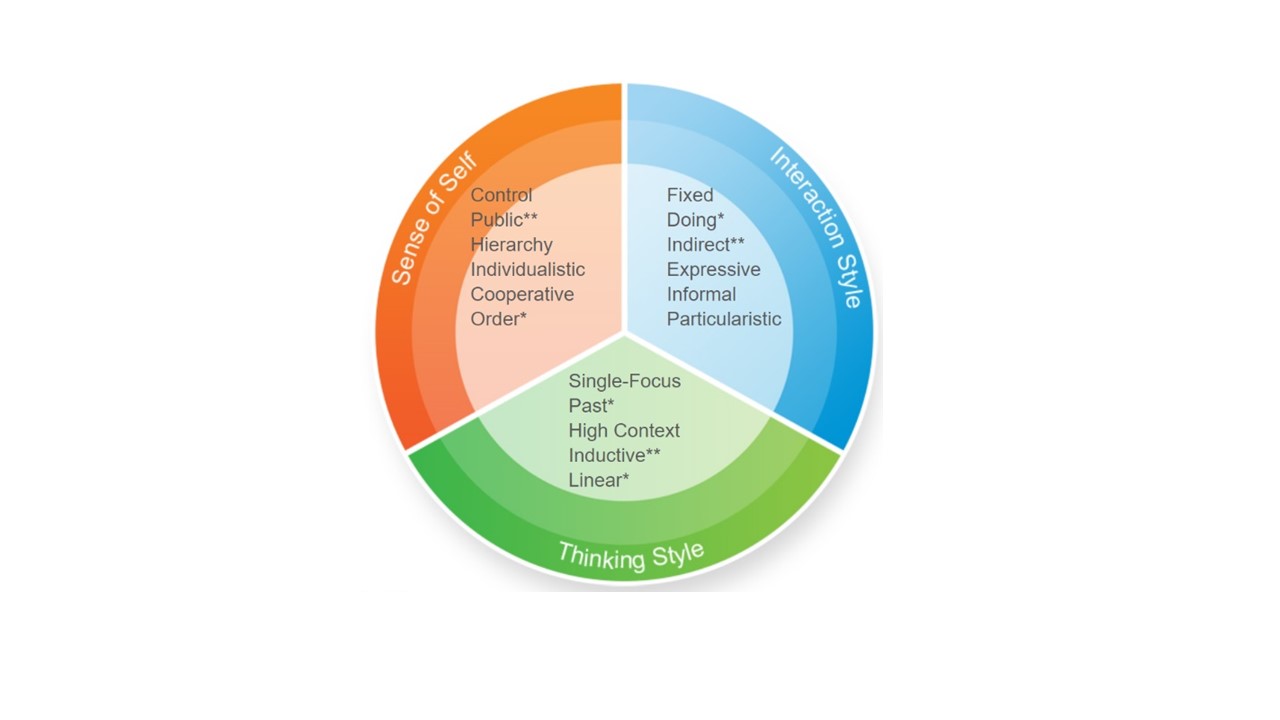
For example, regarding Interaction style, if you tend to be indirect in your communication, you can learn how that might affect team members who are very direct with theirs. While your goal is to tactfully deal with conflict or disagreement, your colleagues may want to address it head on. You feel they are too blunt; they think you are avoiding issues, and distrust can develop. Knowing something about your preferences and theirs provides an opportunity for exploration and growth as a team.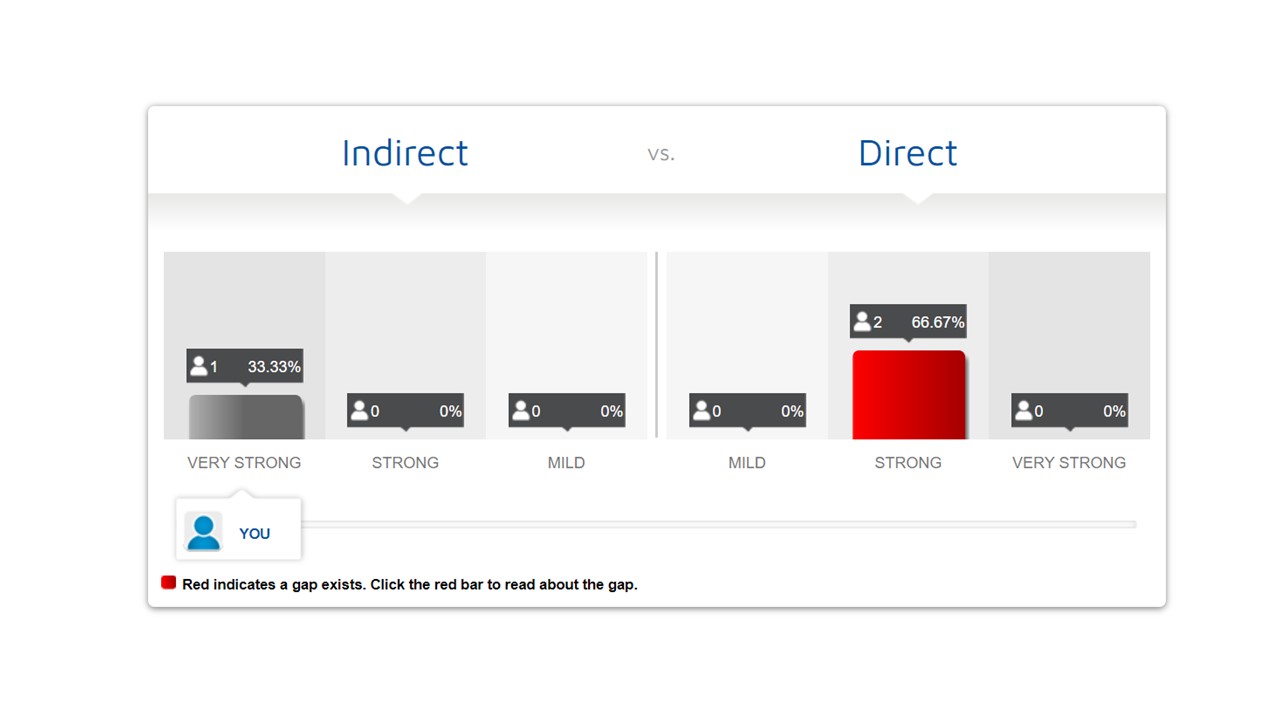
As you can see, this is quite useful for self-discovery in alignment with learning about colleagues’ communication preferences and work styles as well as better understanding other cultural norms and practices. The best part is that the tailor made feedback (to your profile) doesn't just give you knowledge, it provides suggestions for you to take actionable steps to improve your skills.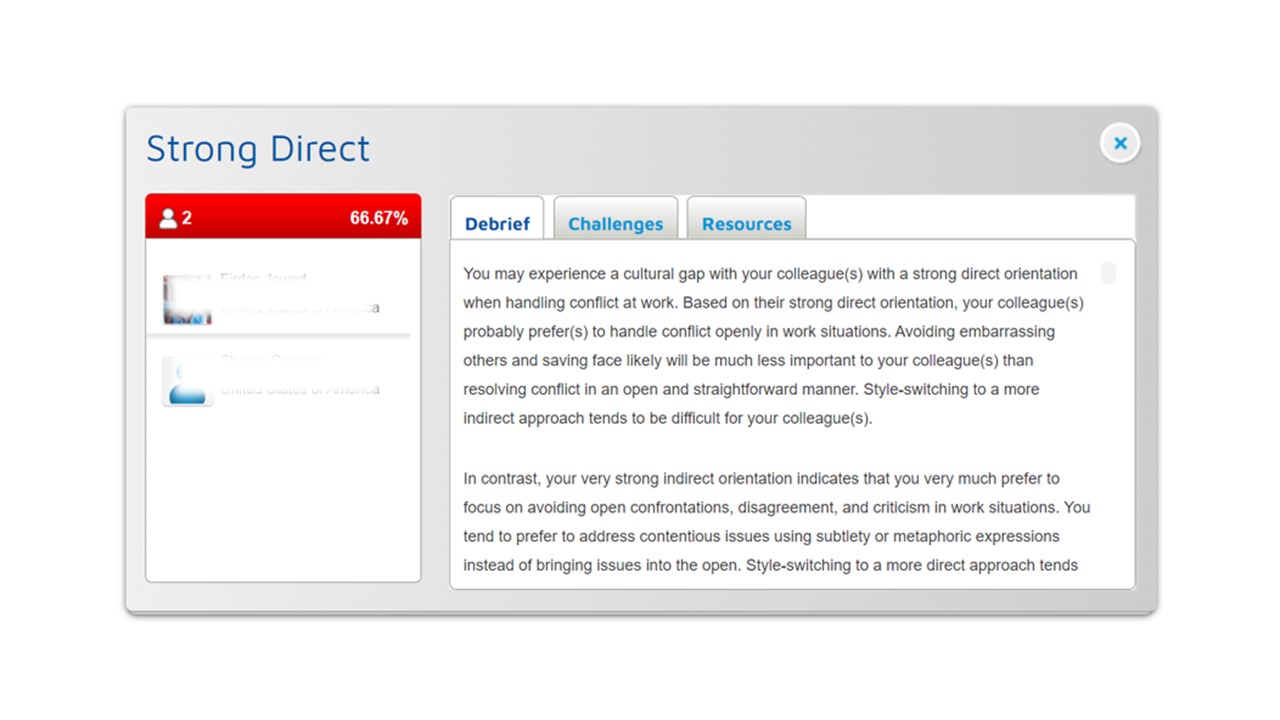
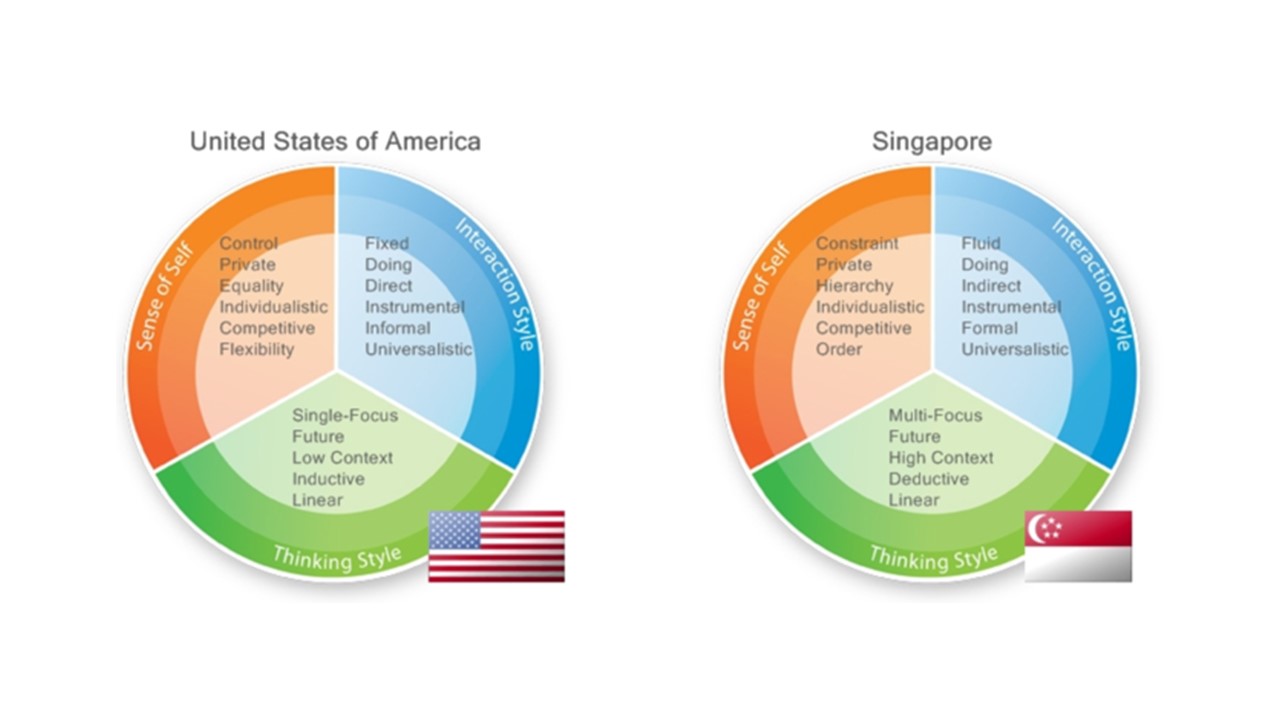 It doesn’t stop there – just as with the colleague to colleague comparison debrief, challenges, and resources, the same is provided for checking out the national cultures. You can learn about all of these 34 different orientations (e.g., doing/being; fixed; flexible; private; public) by clicking on each and reading about both information AND skills to help you engage more appropriately with different behaviors. Additionally, since people have unique backgrounds, you can compare up to ten cultures at a time.
It doesn’t stop there – just as with the colleague to colleague comparison debrief, challenges, and resources, the same is provided for checking out the national cultures. You can learn about all of these 34 different orientations (e.g., doing/being; fixed; flexible; private; public) by clicking on each and reading about both information AND skills to help you engage more appropriately with different behaviors. Additionally, since people have unique backgrounds, you can compare up to ten cultures at a time.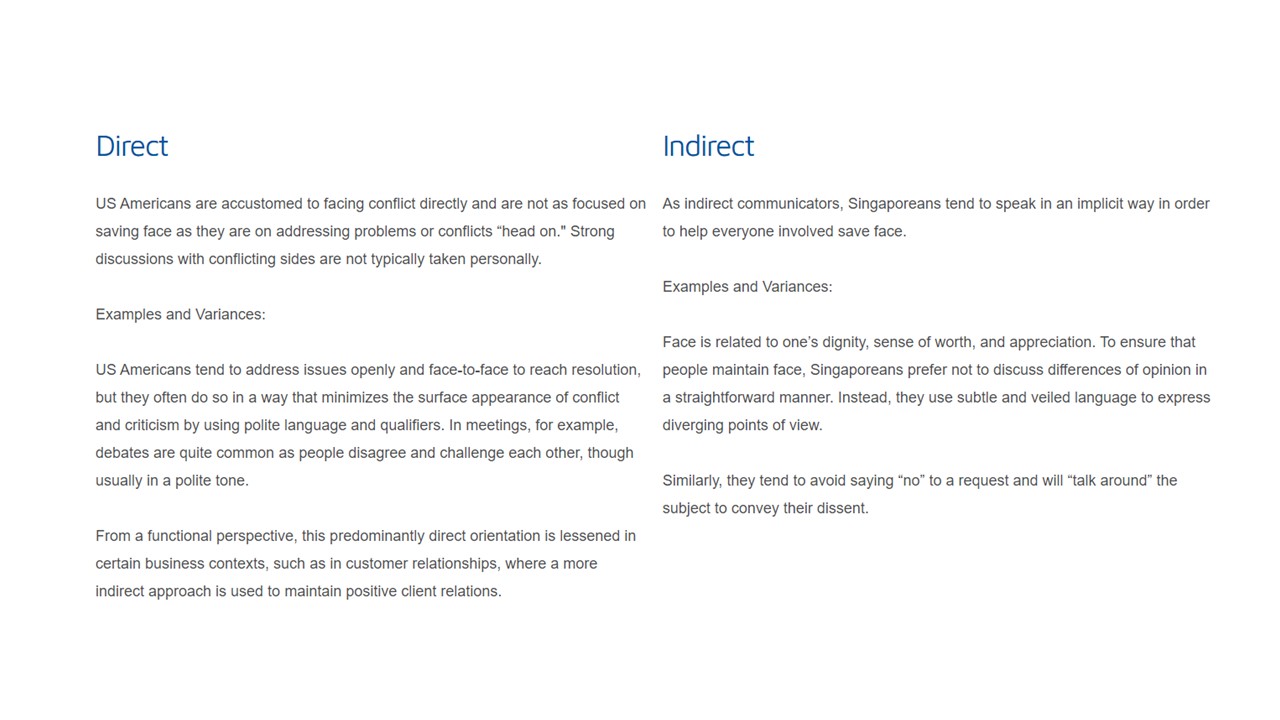 Acquiring knowledge is important in leadership development but creating awareness and then learning skills to deal with differences that arise due to personalities, communication, work styles, and cultural backgrounds are critical in today’s multicultural workforce – whether at home or abroad.
Acquiring knowledge is important in leadership development but creating awareness and then learning skills to deal with differences that arise due to personalities, communication, work styles, and cultural backgrounds are critical in today’s multicultural workforce – whether at home or abroad.
Wouldn't it be great to unlock the mystery of how to communicate and work better with team members? Your boss? Your clients? Learn more about how you can develop your awareness, knowledge, and skillsets for being a more effective leader when dealing with cultural diversity. Book a discovery call today! Talk with Me Today! I offer courses, coaching, and consulting – along with great assessments – to help you jump start the critical skillsets needed for your advancement and growth.

